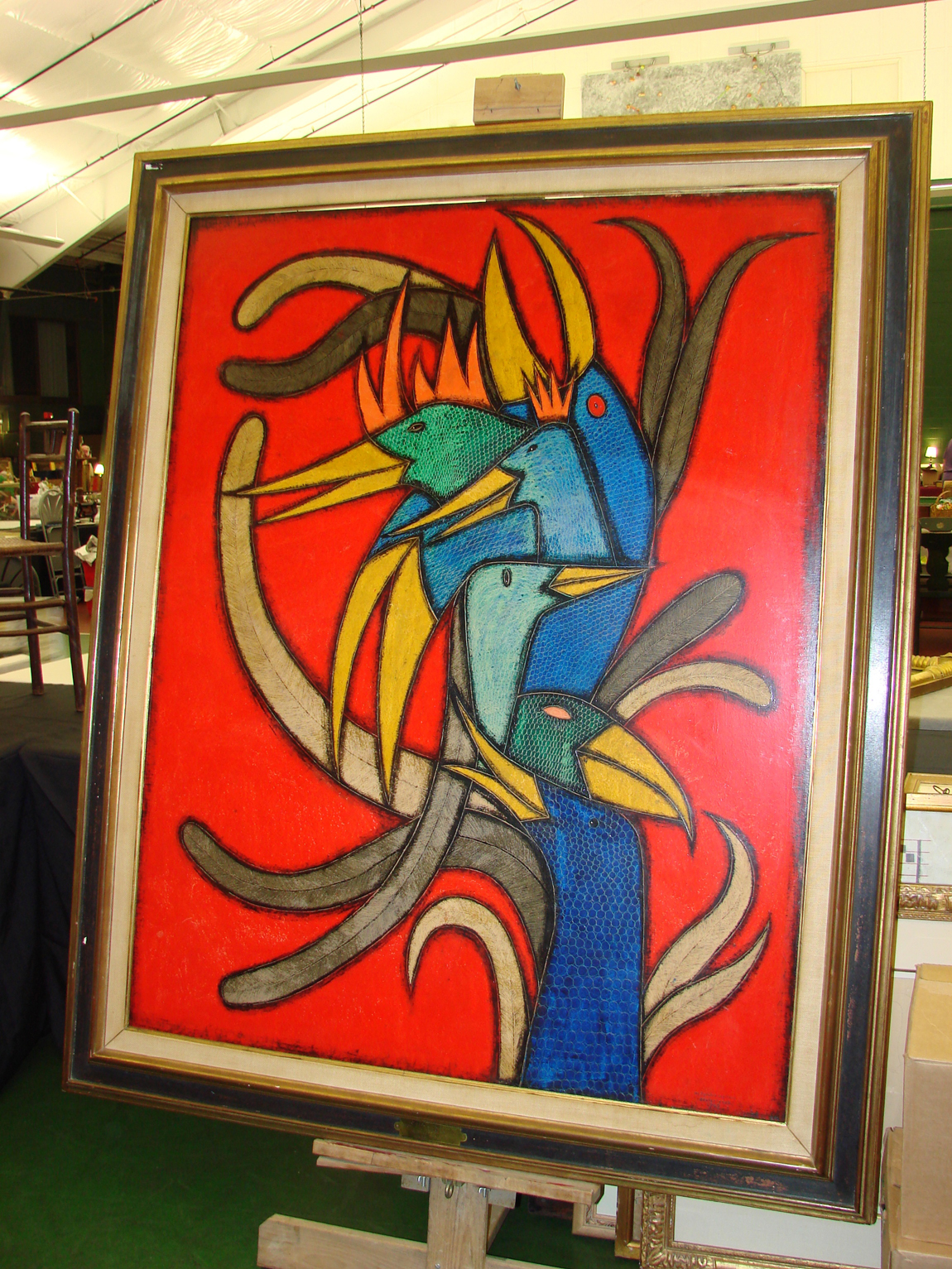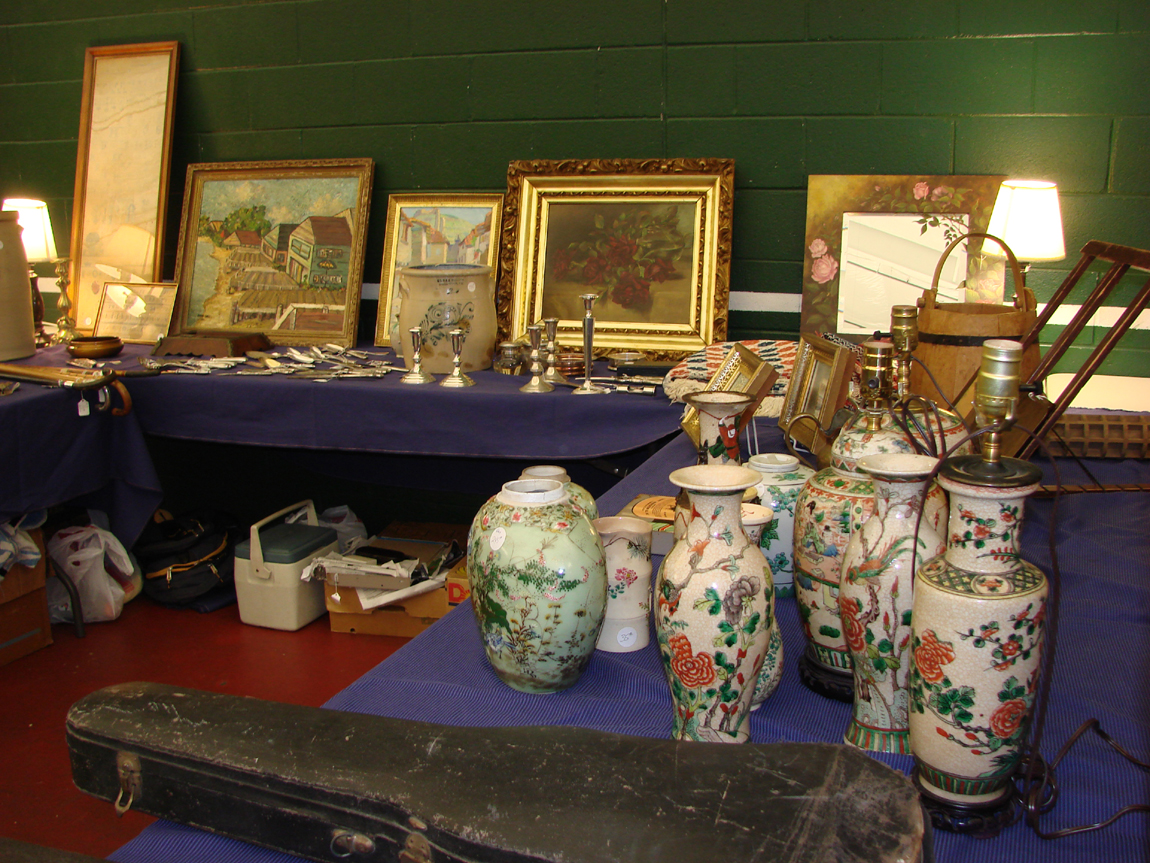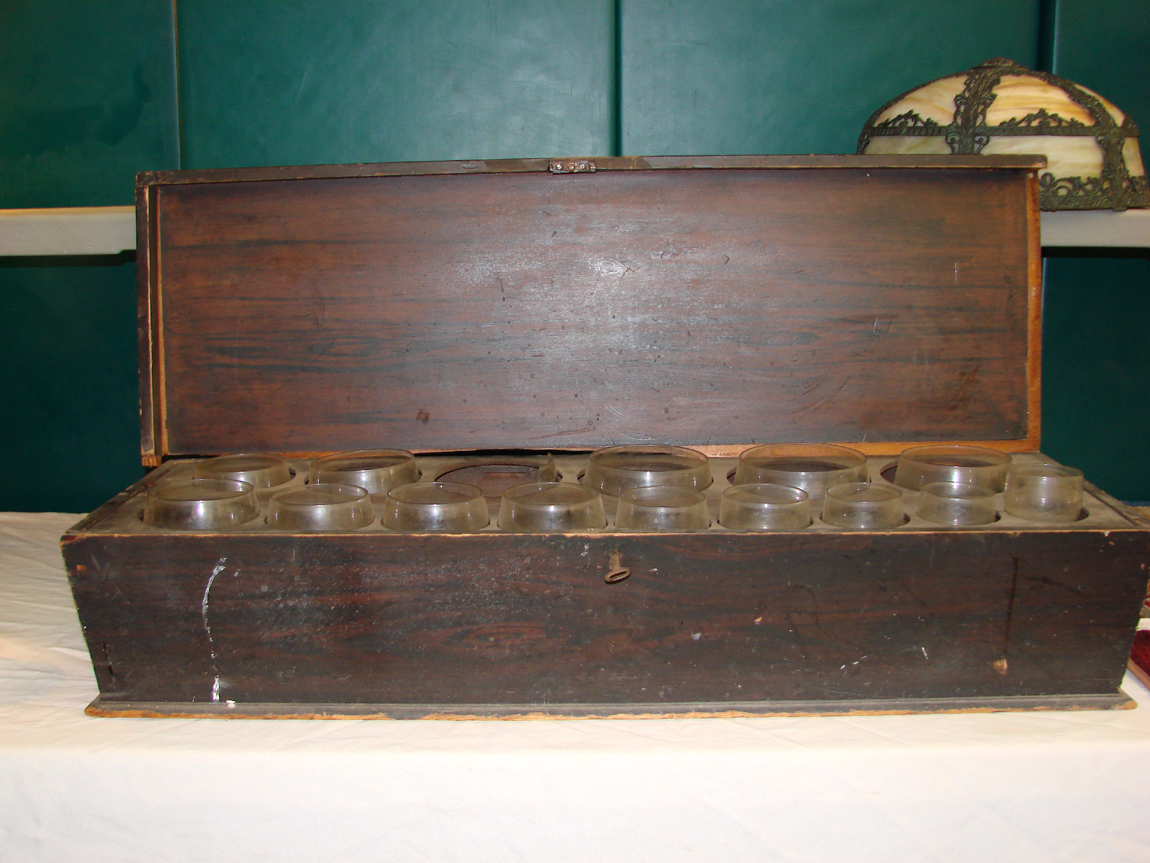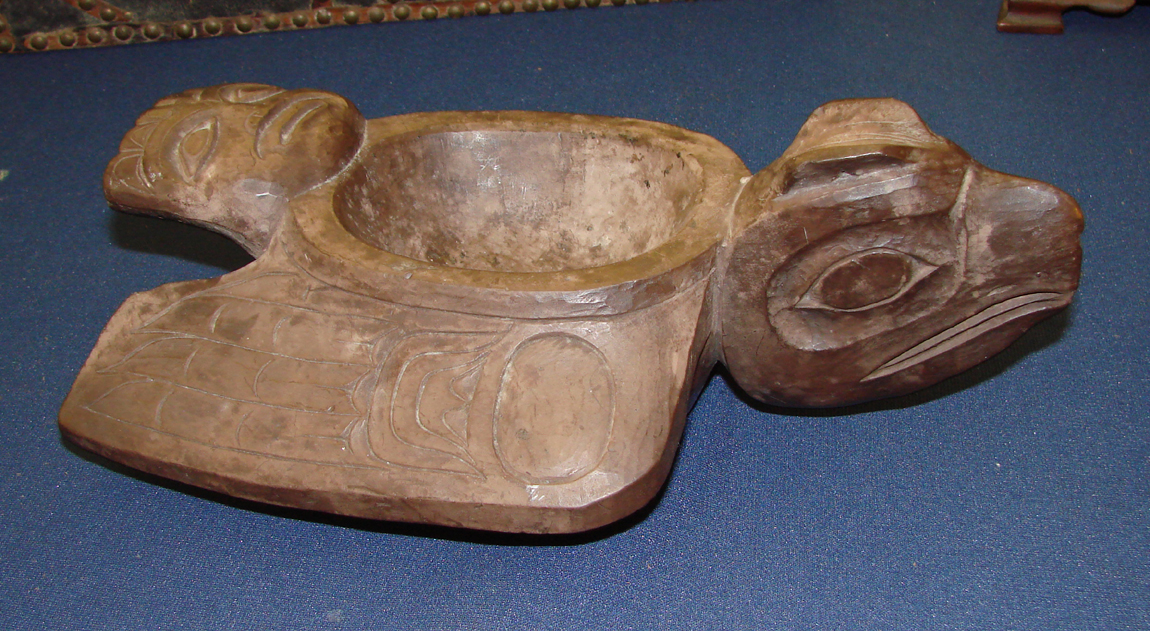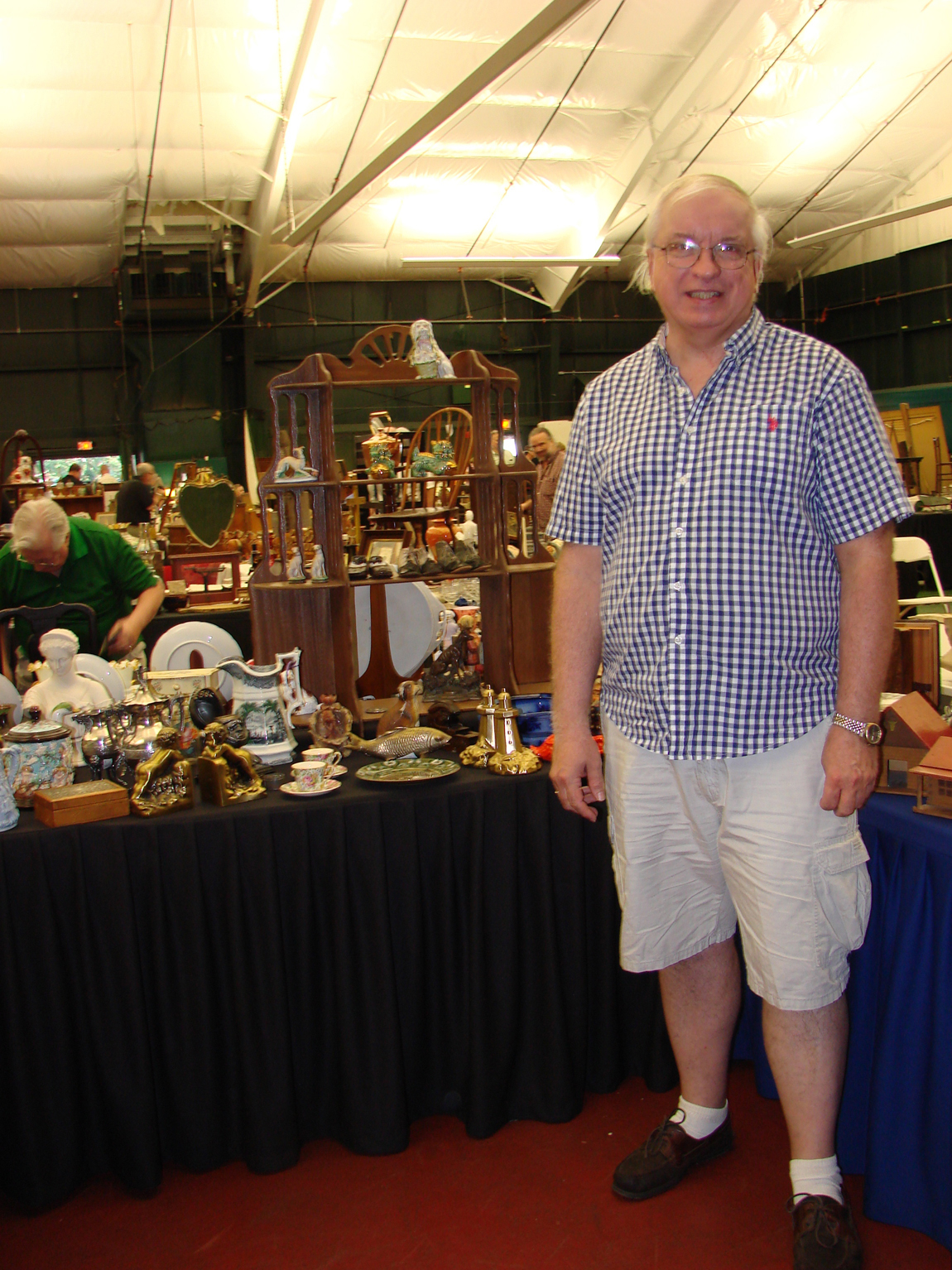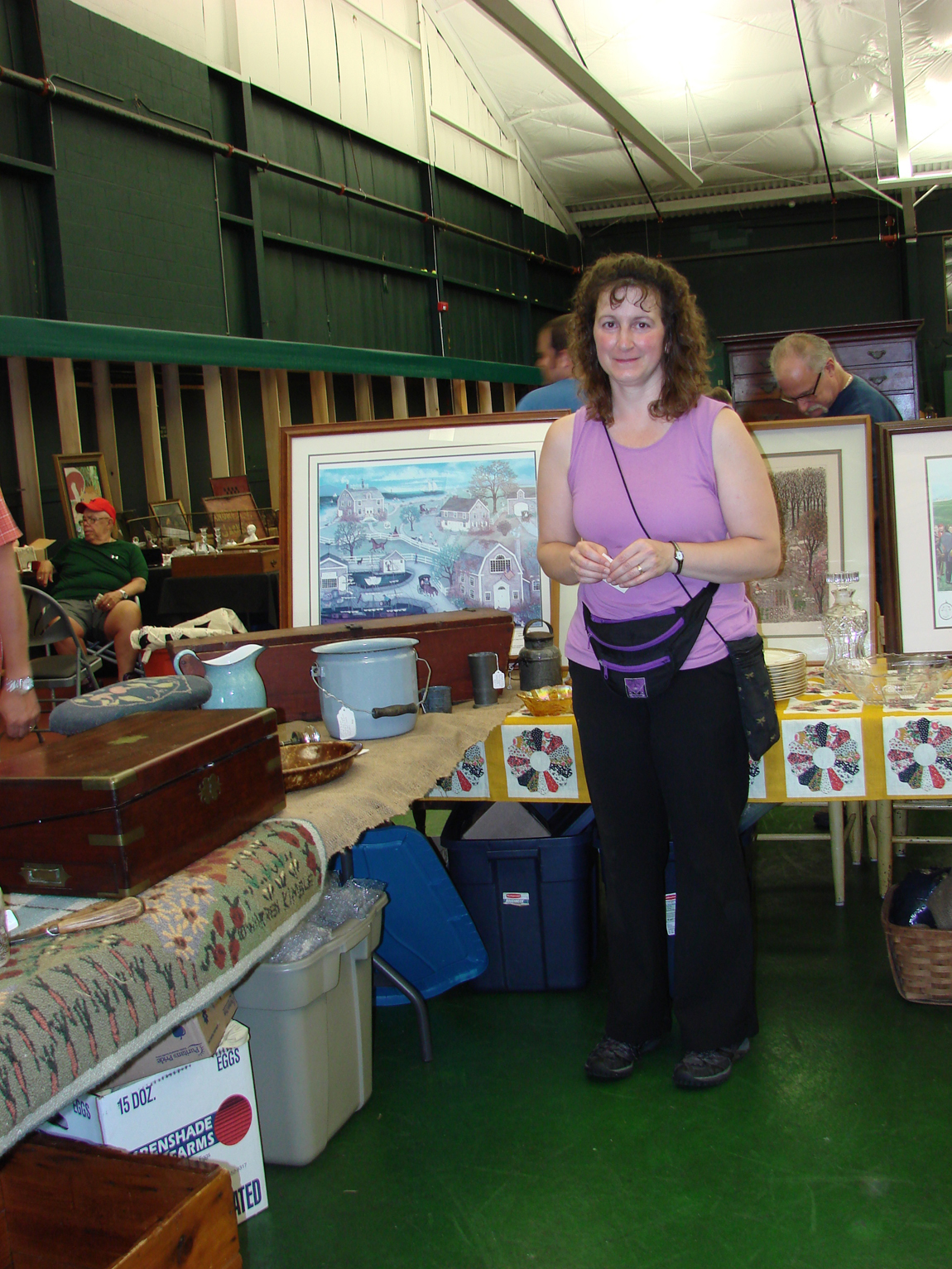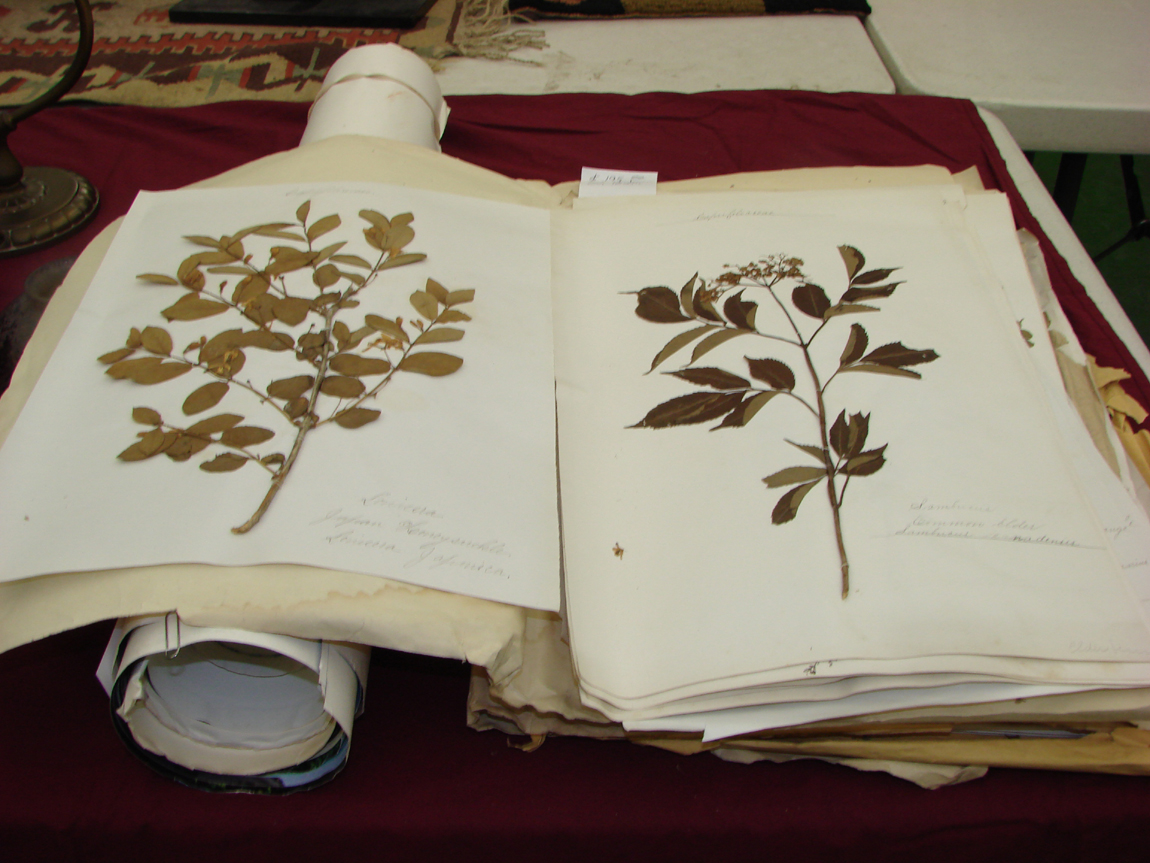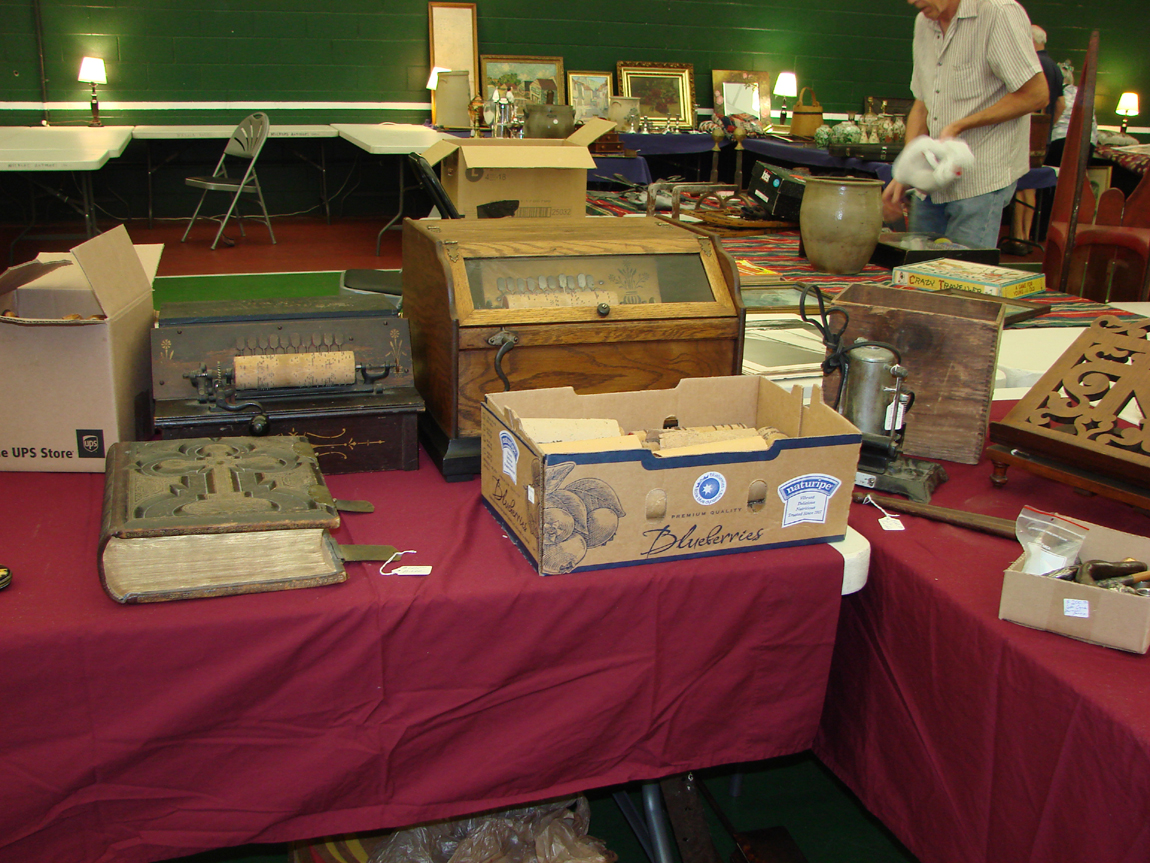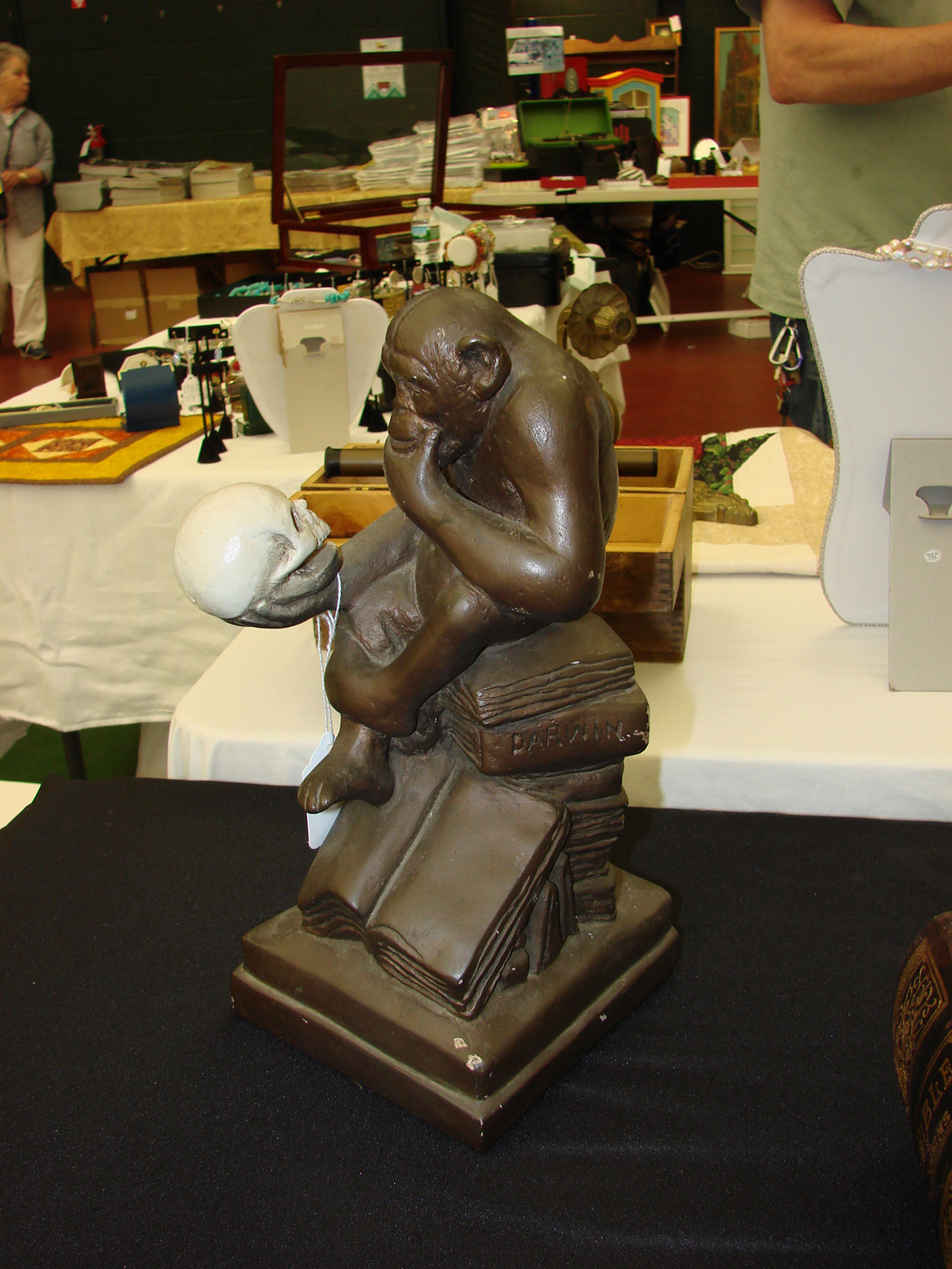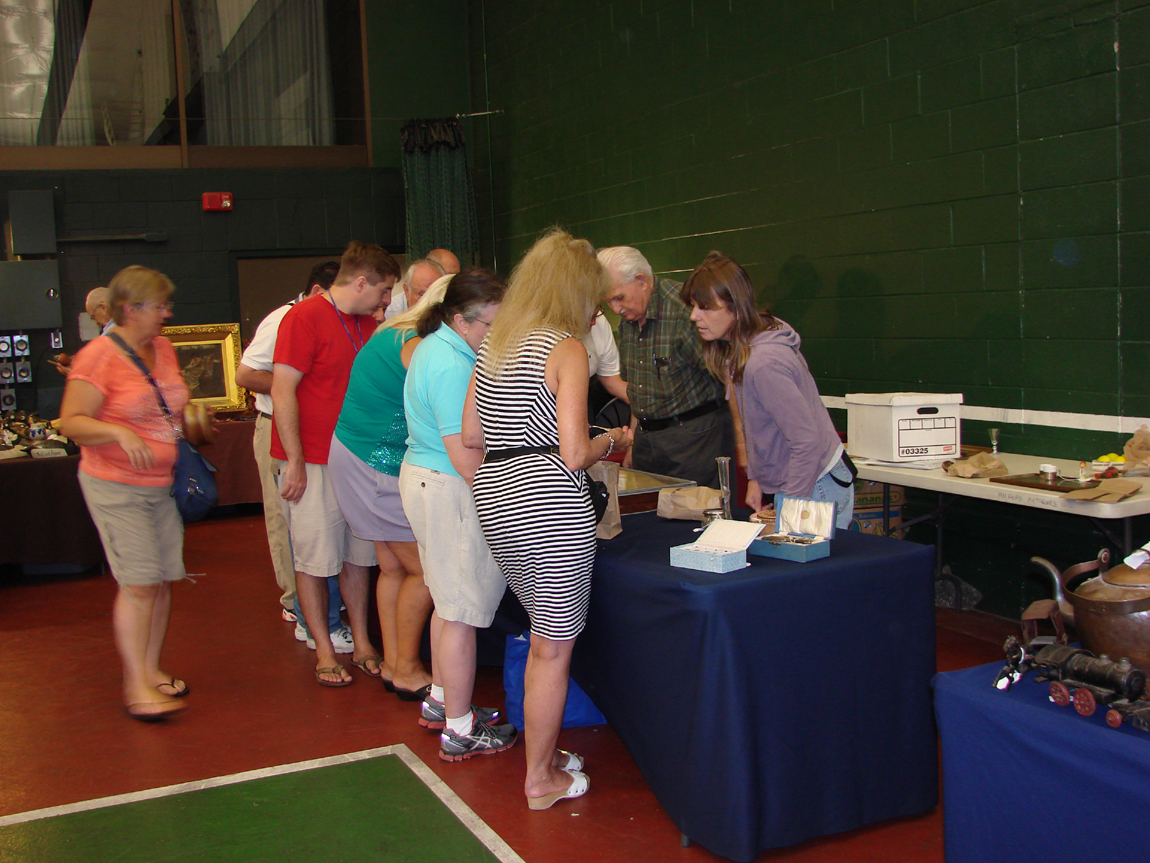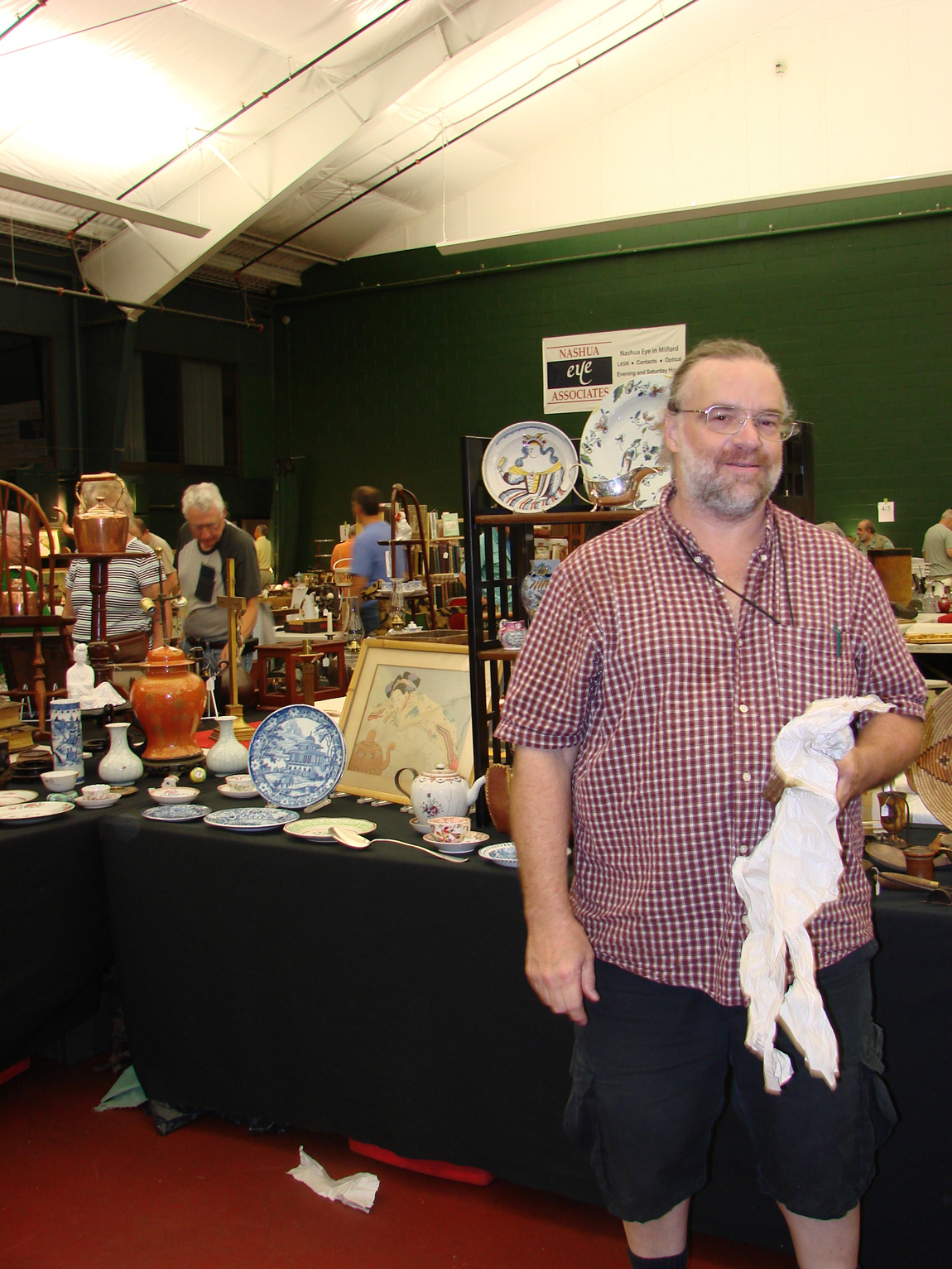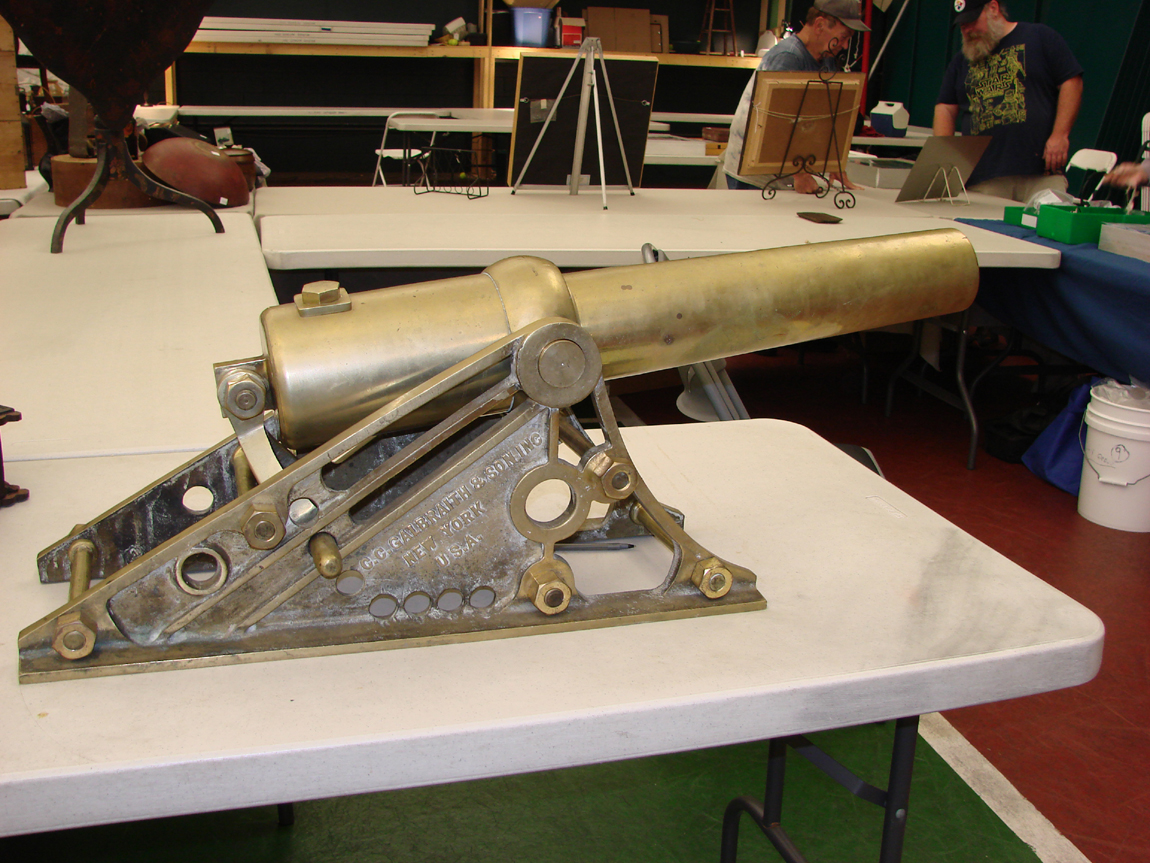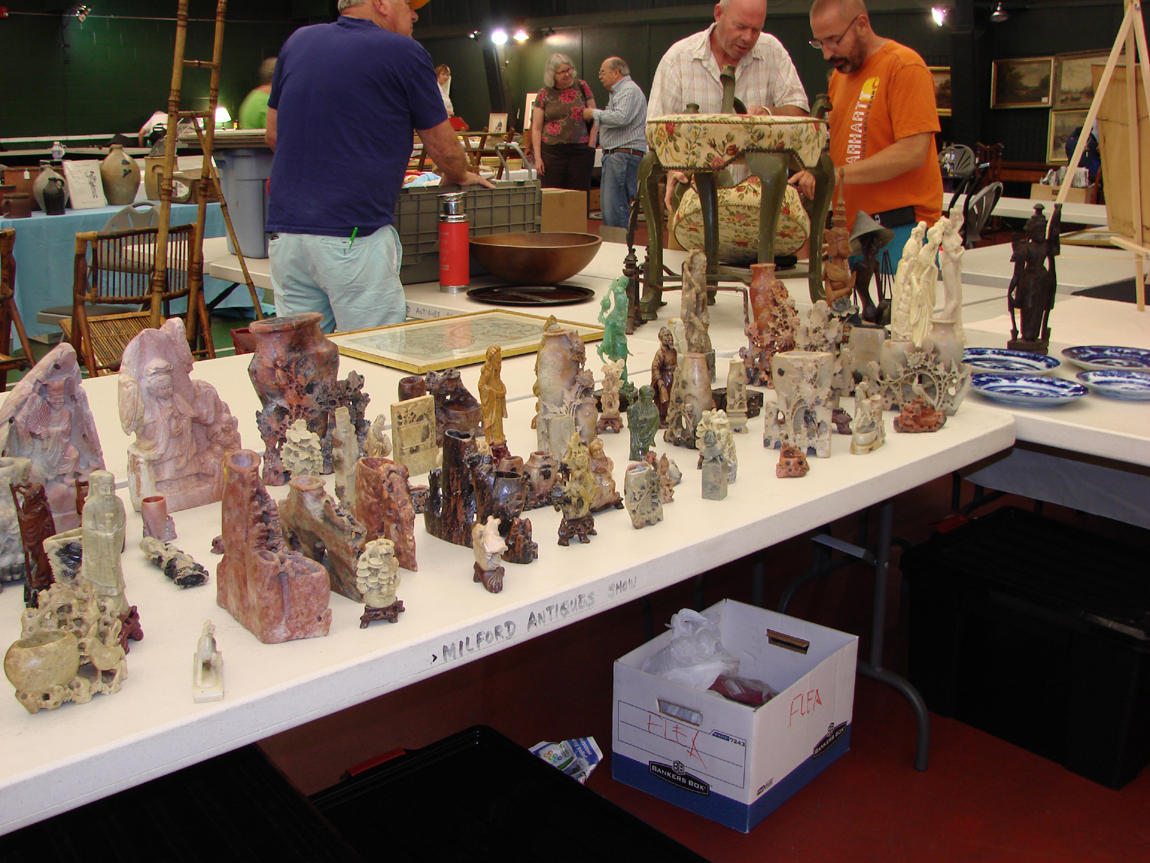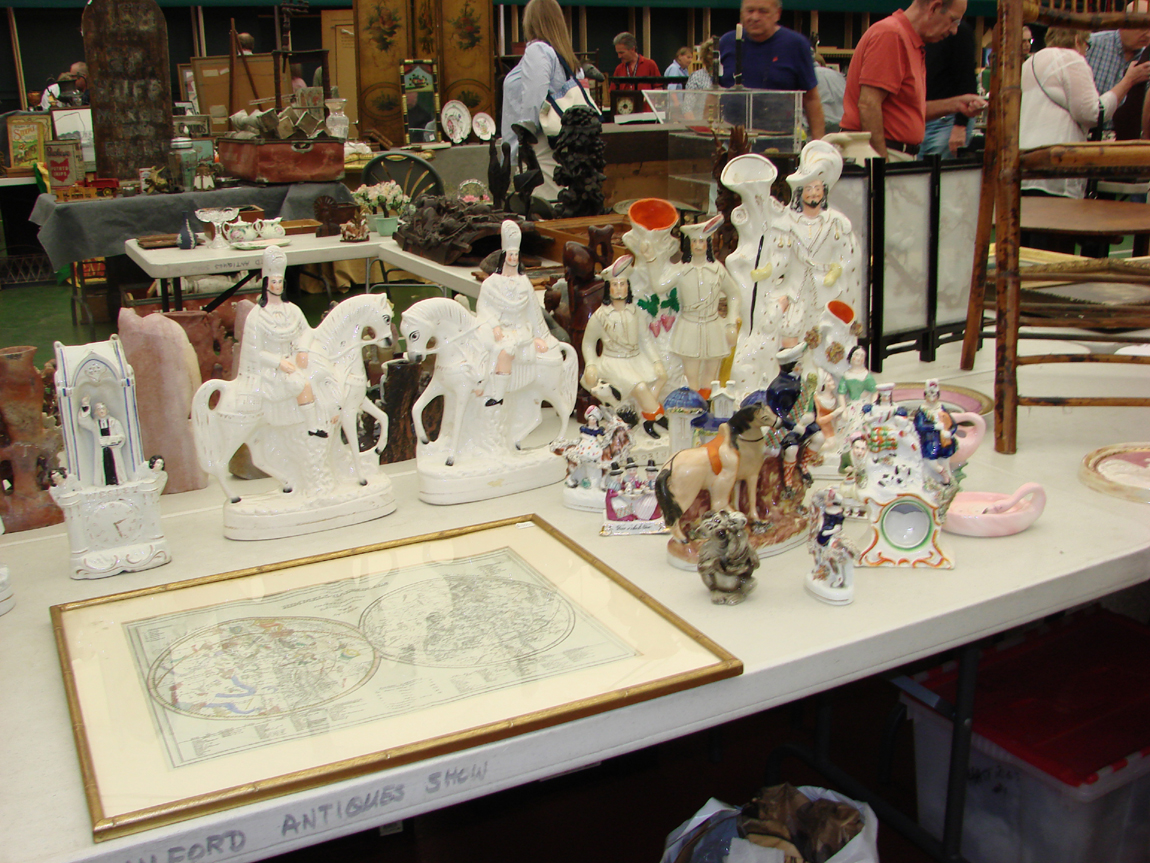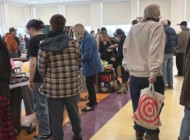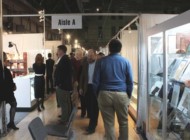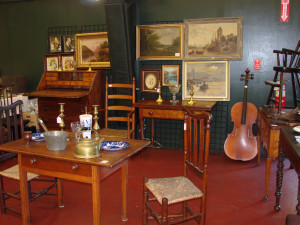
David Rose, West Upton, Mass., specializes in Eighteenth and Nineteenth Century furniture and accessories. Prices were reasonable; the circa 1825 rope leg table was $595 and the slant front desk was less than that.
Review And Photos By Rick Russack
MILFORD, N.H. — Antiques Week in New Hampshire started with a new event this year, thanks to longtime show promoter Jack Donigian, who has been running antiques shows in New Hampshire for more than 40 years. His shows usually take place every Sunday mid-October to the end of March. That is close to 25 shows a year for 40 years. He has built up a loyal group of exhibitors and a strong following of dealers and collectors.
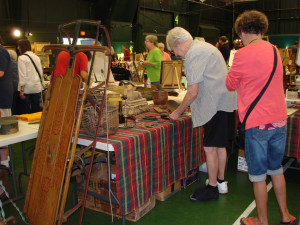
The large Flexible Flyer sled, in very good condition, was priced at $150 by Tatnuck Antiques, Worcester, Mass.
This time, at the suggestion of several of his exhibitors, he decided to fill the void left by the absence of the auctions that have traditionally started Antiques Week and put on a special edition of his show August 7. His shows always start early, with dealers setting up at 6:30 am. Early buyers are in the building as the dealers are unpacking and the show ends at noon. Admission is free after 9:30.
The show had about 75 dealers, mostly from New Hampshire, but several are from the surrounding states. Donigian’s shows are old-fashioned table top shows — no walls, no special lighting, and table coverings are optional. Booth rent for this show was $125 for a full booth and $65 for a half booth. Rents are even less at the fall and winter shows. Donigian said, “I like to keep the booth rents low — that encourages new dealers to try it. You never know what will turn up here: it’s almost all fresh, unpicked material.” Interestingly, most of the dealers we spoke with said they have done these shows “for years” and many exhibited when the shows were run at St Stanislaus Hall in Nashua, more than ten years ago.
The emphasis of the show, as you might expect, is country, but there is plenty of other stuff. If you doubted that it was a country show, when you saw the flock of sheep in the field in front the building, you knew where you were. If your interest is in wooden ware, stoneware, toys, books, early ceramics, furniture, paintings, photographica, art pottery, or just “stuff,” there was plenty to choose from.
One of the more interesting and unusual items in the show was a “glass harmonica,” offered by George Bittner, Chester, Vt. It was a set of 15 glass goblets of differing sizes, arranged in a grain-painted chest with a lift top. It had obviously been stored for years, as the glasses and the interior showed the dust and grime of the ages. When in use, various musical notes could be obtained by a skillful player, utilizing a wet finger-tip rubbed on the various goblets, which would have held different amounts of water, depending on the tone and pitch desired.
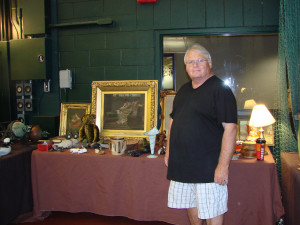
Jack Tullish, Scituate, Mass., brought an oil painting by William Verplank Birney and priced it at $2,200. His much-loved teddy bear was $150.
Bittner estimated the date as circa 1840 and that was probably about right. This type of musical instrument has a long history. Mozart and Beethoven composed music for it, Marie Antoinette learned to play it as a child, and Benjamin Franklin devised an improved version of it in 1761. The 1980s saw a resurgence of interest in the instrument, and contemporary composers have written for it. One of the glass goblets in this set was broken and Bittner had it priced at $650. Bittner also had five folios of sketches by an unidentified artist. One folio was dated 1941 and the lot was priced at $450.
Another unusual item, a bronze cannon, was in the booth of Kurt Mansbach, Marshfield, Mass. It had been used by the Lifesaving Service to shoot a line to a disabled vessel, either from the shore or another boat. It was marked C.C. Galbraith & Sons, Inc, New York. Mansbach said it dated to about 1900 and he priced it at $2,200. Mark Marino, Lynn, Mass., had about 75 pieces of Chinese carved soapstone. He said these were part of a 400-piece collection he had bought recently. They were priced between $10 and $50 and several sold early in the show.
A large oil painting, dated 1969, by Belgian artist Jean Emil Oosterlynck (1915–1996) was in the booth of Jeffrey Andrews, Salisbury, Vt. It depicted birds in a tree, with bright, bold colors. Andrews priced it at $3,450 and said it had come from a recent Bill Smith auction. Another very nice oil painting, a stormy marine coastal scene with a beached ship, by Samuel Phillips Jackson, (British, 1830–1904) was offered by Falmouth Antiques, priced at $3,600.
Several booths had toys and children’s items. A large Flexible Flyer sled was priced at $150 by Tatnuck Antiques, Worcester, Mass., a well-loved teddy bear was offered at $150 by Jack Tullish, Scituate, Mass., and space toys were available in other booths. Joan and Dick Gosselin, Talking Leaves Books, Hooksett, N.H., had a variety of children’s books. Several other dealers had books in their booths and one had a different way of pricing them: large books were $8 and small ones were $3. Not exactly a book, but Dave Deneu, Manchester, N.H., had multiple portfolios of mounted floral specimens, assembled by Agnes Pillsbury, circa 1850. She called it her “herbarium” and had carefully mounted the specimens on large, heavy sheets of paper, and carefully identified each. The entire lot was priced at a very reasonable $195.
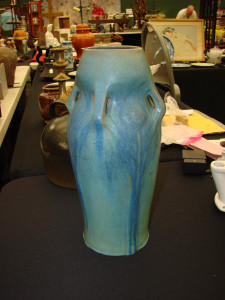
Artus Van Briggle designed this vase in 1903, and it was produced in 1918. It was in the booth of John Prunier, Warrens, Mass., and priced at $1,250.
The show got off to an early start for at least one dealer. At about 6:32 am, John Prunier, Warren, Mass., sold a large Rose Medallion charger to James Johnston, a Franklin, Mass., dealer. Prunier sells early ceramics and art pottery, along with other Twentieth Century items. He had a large Van Briggle vase which had been designed by Artus Van Briggle in 1903 and made in 1918. It was priced at $1,250. Kevin Timme, Killingworth, Conn., had numerous Staffordshire figures in his booth and said that he had sold several to one customer. His figures were priced reasonably, ranging from $75 to $200.
Tom and Bev Longacre, Marlborough, N.H., dealers were shopping the show. Bev, who specializes in Christmas ornaments, mentioned that she has been sending monthly, themed emails to her customers, offering topical ornaments. “I did one mailing recently that featured ornaments with a summer theme, and one for the Fourth of July with red, white and blue ornaments. I’m going to do one with the theme of a lobster dinner. I have ornaments that relate to food, so that should work. These kind of mailings are fun to do; they keep me in touch with my customers, and stuff sells. When I did the summer-themed mailing, I sent it out about 9 am one morning. Ten minutes later, I’d sold four things. Not expensive things but still worthwhile. I use Constant Contact for my emailings. I’m not big on social media.”
After the show, the veteran show promoter was upbeat about the results. “We had a number of out-of-state buyers that we don’t see for our fall and winter shows. Those people were in town for all the other stuff that’s going on this week. I like to see that because it gives the exhibitors exposure to a set of buyers that they don’t normally see. You never know what will be there at our shows.
“Exhibitors know they can bring antiques and collectibles; just not new stuff. At our fall and winter shows, we have some exhibitors that do the show every week — they sign up for the season. And others do it when they’ve found some interesting material,” Donigian said, “I think giving them the opportunity to rent a half booth makes it very affordable, and if someone’s been thinking about doing a show, this is an easy way to ease them in to it. And I think the free admission we offer after 9:30 also attracts new people. From my point of view, the early buyer’s premium offsets the cost to me of the free admissions, so that works out well. Early buying is fairly new for us and we’ll stay with it.” When asked if he’ll do the same Antiques Week opener again next year, the answer was “Yes, I’m sure we will. It worked for everyone this time and as long as it works, we’ll keep doing it.” When asked about the number of shows he’s run, Donigian said, “It’s probably over 1,000 shows. No one else in New Hampshire has done that many, and I don’t know of anyone, anywhere that’s run that many antiques shows.”
For additional information, www.milfordantiqueshow.com or 781-329-1192.

